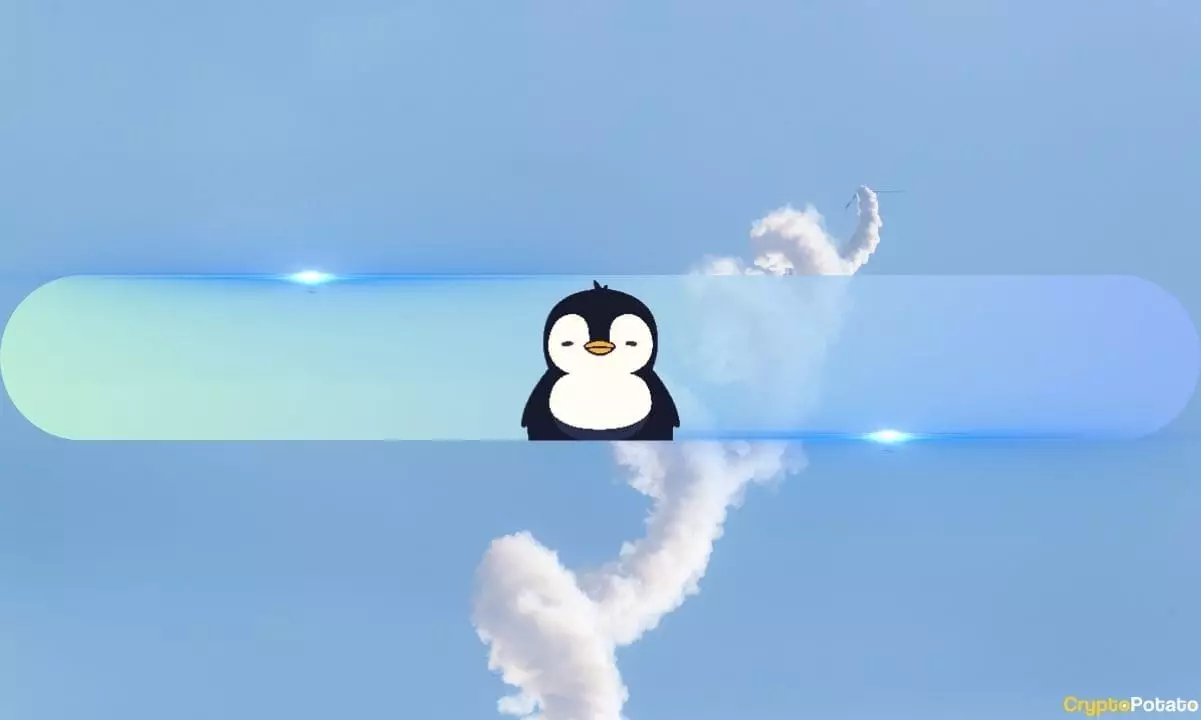The Pudgy Penguins NFT project has become a remarkable phenomenon in the digital art and cryptocurrency space, especially in the wake of an impressive string of airdrops that have drastically benefited its holders. With reports indicating that each NFT has yielded rewards averaging approximately $137,000 at peak valuations, it raises questions not only about the token’s immediate financial success but also about the future trajectory of the NFT market as a whole. This article will explore the significant contributors to this success, the broader implications of these rewards, and the current state of the NFT market.
Central to the financial gains seen by Pudgy Penguins NFT holders has been the series of airdrops, particularly the PENGU airdrop that emerged as a game changer. According to CoinGecko, this airdrop alone accounted for around $116,365 per NFT, a staggering 86.3% of the total value distributed. Launched in December 2024, the PENGU token distribution not only demonstrated the potential profitability of holding Pudgy Penguins but also set a precedent for how airdrops can create massive value for NFT ecosystems. Each NFT was rewarded with 1.7 million PENGU tokens, and the substantial rise in its trading volume—peaking at $0.07—highlighted the dynamic nature of such investments.
The strategic inclusion of other NFT collections like Doodles and Moonbirds in this reward distribution exemplified an effective method of expanding the Pudgy Penguins community. This approach enhanced the overall influence of Pudgy Penguins within the broader NFT landscape, opening up new avenues for collaboration and community building.
Beyond the monumental PENGU airdrop, holders of Pudgy Penguins were not left lingering in single-reward territory. Numerous additional airdrops from projects such as Dymension, Omni Network, zkSync, and LayerZero further solidified the financial advantages for holders. For instance, the Dymension airdrop distributed 1,313 DYM tokens per NFT, achieving a peak value of $8.50, totaling around $11,160 per NFT at its zenith. The connection with the Cosmos ecosystem also underscores the growing trend of integrating NFTs with broader blockchain applications, shifting the landscape from mere collectibles to utility-driven assets.
Conversely, the Omni Network and zkSync contributions showcased NFTs’ role in advancing blockchain interoperability and scalability, respectively. The thrilling potential of these projects lies not just in their immediate rewards but also in the foundational role they are playing in establishing NFTs as integral components of advanced blockchain architectures.
However, while the Pudgy Penguins project has basked in the light of success, it is crucial to analyze the broader NFT market’s condition. Observations from the past year reflect one of the weakest periods for NFTs since 2020, characterized by a 19% decrease in trading volumes and an 18% decline in sales. The initial promise of 2024 gave way to uncertainties, as trading volumes plummeted dramatically by the third quarter. Although a slight revival occurred toward the year’s end, the total trade volume still fell short of initial expectations.
This stark reality prompts a deeper exploration into the underlying factors driving community and marketplace dynamics. The seemingly paradoxical situation—where token values are rising while trading activity dwindles—opens a discourse regarding the sustainability of short-term financial gains versus long-term investment viability. Particularly in the gaming sector, where digital ownership models are increasingly popular, there exists an opportunity for the NFT space to pursue sustainable growth through innovative applications.
The journey of Pudgy Penguins and its holders illuminates the dual narrative inherent in the NFT market: massive financial gains exist amid turbulent market conditions. Unquestionably, the airdrops and strategic positioning have proven advantageous for the Pudgy community. Yet, the broader NFT ecosystem grapples with significant challenges that could shape its future trajectory. As digital art and collectibles continue to evolve, stakeholders must balance exuberant hype with a need for sustainable growth pathways. The eventual outcomes of these dynamics could very well redefine what it means to invest in NFTs going forward.


Leave a Reply